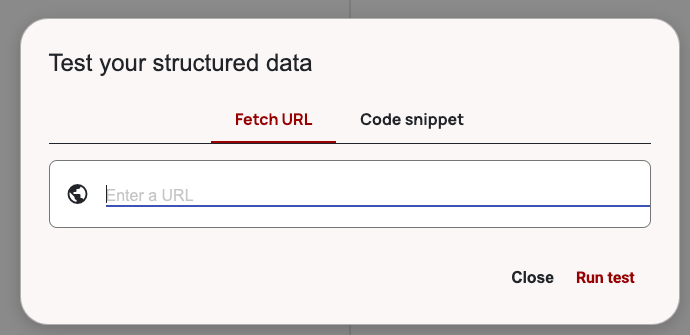
eCommerce has grown into a $6.8 trillion industry and will surpass $8 trillion by 2027, highlighting its ongoing growth and impact[1].
For businesses aiming to compete in this thriving yet crowded landscape, Conversion Rate Optimization (CRO) is more crucial than ever. CRO is the process of improving the percentage of website visitors who take a desired action, such as purchasing or filling out a form.
It is a key indicator of an eCommerce website’s overall effectiveness and can significantly impact sales and revenue.
This guide will explore various technical strategies you can implement on your website to optimize your conversion rate and drive more sales.
What is an eCommerce Conversion Rate?
An eCommerce conversion rate is a key performance metric that measures the percentage of website visitors who complete a desired action—typically making a purchase. Simply put, it reflects how effectively your site transforms casual browsers into paying customers.
The average conversion rate for 2025 across the eCommerce industry falls between 2% and 4%, with variations across industries[2]. It means that out of every 100 visitors, only 2 to 4 will result in a sale. However, optimizing your website can significantly increase this percentage and boost your revenue.
For example, you invest $4,000 per month on ads, attracting 20,000 visits and 400 purchases. It gives you a conversion rate of 2%, with each conversion costing $10.
With the same budget, you increase purchases to 800 the following month. Your conversion rate rises to 4%, and your cost per conversion drops to $5, resulting in increased efficiency without extra cost.
Pro tip: You can calculate your eCommerce conversion rate using the formula below.
(Number of Sales ÷ Total Visitors) × 100 = Conversion rate
For example, if your eCommerce site receives 1,000 visitors and records 20 sales:
20 ÷ 1,000 = 2% conversion rate.

How to Increase Conversion Rates on Websites
Website load time can have a significant impact on your conversion rate. It refers to how long it takes for all the elements on a page—like fonts, images, and videos—to load for a visitor. The longer it takes, the more likely visitors will abandon your site.
But how fast should a webpage load?
According to Hobo, 87% of customers expect a webpage to load in 2 seconds or less[3]. Additionally, a test conducted by mPulse Mobile, an AI healthcare software company, found that:
- Pages loading in 2.4 seconds had a 1.9% conversion rate.
- At 3.3 seconds, the conversion rate was 1.5%.
- At 4.2 seconds, the conversion rate was 1%.
- At 5.7+ seconds, the conversion rate was 0.6%.
It shows that even a small delay in page load time can significantly impact the conversion rate. So, optimizing for speed is critical.
Optimize Server Response Time
A key factor affecting your website’s loading speed is the server’s initial response time—the time it takes for your server to respond to a request from a visitor’s browser.
An optimal server response time for website performance is under 100ms, with 100ms to 200ms still considered good. Speeds between 200ms and 1 second are acceptable but need improvement, while anything over 1 second is too slow. Google recommends a response time under 200ms.
Follow these tips to optimize your server response time:
- Use Content Delivery Networks (CDNs): CDNs store and deliver content from a network of servers around the world, decreasing users’ server response time. InMotion has built-in CDN capabilities, or you can use a third-party service like Cloudflare, which offers a free plan.
- Browser caching: Caching saves certain data from your website, so when visitors return, their browser can load the page faster.
- Optimize images: Opt for WebP or PNG formats and compress images to reduce file size without sacrificing quality.
- Minify code: Minify your HTML, CSS, and JavaScript files by removing unnecessary characters, white space, and comments. It reduces the overall file size and speeds up page load times.
- Optimize your database: Optimize your database by removing unnecessary data, indexing tables for faster access, and optimizing queries.
- Minimize HTTP requests: Reduce the number of elements on a webpage, such as images, scripts, and stylesheets. Fewer elements mean fewer HTTP requests, resulting in faster loading times.
- Enable gzip compression: Gzip compresses files on your server before sending them to a browser, reducing the file size and improving load times.

The great news is that many hosting providers like ours automatically take care of numerous optimizations for you. If you’re still experiencing slow load times even after optimizing your server response time, consider upgrading to a faster hosting plan.
WordPress & WooCommerce Optimization
As the most popular Content Management System (CMS) in the world, WordPress powers 501.28 million websites, accounting for 43.6% of all sites globally[4]. Its popularity can be attributed to its vast array of plugins and themes, making it a popular choice for eCommerce businesses.
WooCommerce is an open-source plugin for WordPress that lets you easily set up and build an eCommerce website. It’s the leading eCommerce platform, with a market share of 35.47%. These open-source platforms offer a wide range of customization options but can also cause performance issues if they are not optimized correctly.
Here’s how you can optimize your WordPress site for increased speed and conversions:
Choose a Reliable Hosting Service
You have three main options for hosting WordPress sites: shared, Virtual Private Server (VPS), and dedicated hosting.
- Shared Hosting: This option is ideal for small, low-traffic eCommerce sites. It’s the most budget-friendly choice, but the server is shared with other websites, limiting its resources.
- VPS Hosting: VPS provides dedicated server resources while still being cost-effective. It’s suitable for medium-sized sites that expect high traffic.
- Dedicated Hosting: Upgrading to dedicated hosting is the best option for large, high-traffic eCommerce stores. It gives you full control over server resources and can manage a high volume of traffic.
Use Caching Plugins
Caching plugins help speed up your site by storing a static version of its pages, reducing the number of server requests and load time. Popular caching plugins for WordPress include W3 Total Cache and WP Super Cache. Additionally, InMotion has an UltraStack feature that can fine-tune any CMS or PHP/HTML/CSS/Javascript-based website.
Optimize Images
Images make up a significant portion of an eCommerce site, so optimizing them is crucial for improving page load times. First, ensure you use the file format WebP or PNG, as they offer smaller file sizes. Then, compress your images using tools like TinyPNG or ShortPixel.
Keep Plugins Updated
Plugins help extend the functionality of WordPress and WooCommerce sites, but outdated plugins can expose your site to security vulnerabilities. You can update your plugins manually, but most managed hosting providers offer automatic updates for convenience.
Utilize Lazy Loading
Lazy loading is a technique that loads only the images and content visible on a visitor’s screen, delaying the loading of off-screen elements. It can significantly speed up page load times for visitors who don’t scroll all the way down to the bottom of your page.
Optimize Databases
Remove unused plugins and regularly clean your database to eliminate unnecessary data, such as post revisions or spam comments. This optimization helps decrease the strain on server resources and improves site performance. Some recommended plugins for optimizing databases include WP-Optimize and W3 Total Cache.
Pro tip: Perform database backups regularly. Making regular backups of your WordPress site is essential to protect your data and ensure quick recovery in case of unexpected events. InMotion Hosting has Backup Manager, a built-in tool that lets you easily back up and restore your site with one click.
Test for Mobile Responsiveness
Mobile commerce in the United States has surpassed $550 billion, and globally, it generates over $2 trillion, making up 57% of all retail eCommerce sales[5]. As a result, mobile optimization is essential for any eCommerce business.
While most WordPress themes are mobile-responsive, testing your site’s performance with tools like Google’s PageSpeed Insights is crucial. It helps identify any issues and provides recommendations for improving your site’s mobile performance.
Refine Site Messaging
Your website’s messaging should instantly connect with your ideal customers by addressing their specific problems and offering clear solutions. If visitors don’t feel that your site speaks directly to them, they may leave within seconds—resulting in lost conversions, lower engagement, and negatively impacting your SEO.
One of the most critical areas for refining your messaging is above the fold—the section of your website that appears without scrolling.

According to the Nielsen Norman Group, users spend 57% of their total page-view time on above-the-fold content[6], meaning that this space heavily influences whether they stay or leave. If they don’t immediately find relevant information, they’ll likely exit.
To optimize this space, make sure your value proposition is clear, your main call to action (CTA) is easy to find, and your menu has specific category labels. For example, instead of saying “Best Skincare” in your menu, try “Anti-Aging Skincare” for a more targeted approach.
Additionally, leveraging white space in your design enhances readability and makes key elements—like your messaging and CTAs—stand out, preventing visual clutter that can overwhelm users. Use tools like Hotjar to see how users navigate your site, where they drop off, and what content engages them the most.
Lastly, to deeply understand your audience’s pain points and motivations, conduct surveys, customer interviews, or polls, or analyze data from your customer service team to gather insights on what matters most to them. Social media discussions and customer reviews can also reveal common concerns and desires.
Conduct A/B Testing
“Technical” optimizations are not the only important aspect of improving conversion rates. Content can sometimes rank supreme in this effort.
A/B testing, or split testing, compares two webpage versions to see which one performs better. This is very important in improving conversion rates as you can optimize your content for the highest converting option.
Here are some elements you can A/B test on your site:
- Call-to-action buttons
- Product images
- Page layout and design
- Pricing strategies
- Shipping options
- Web copy/content
Before you start testing major changes on your site, we recommend setting up a testing environment. This ensures that your live/production website isn’t negatively impacted by any bugs or errors that may come while playing with site elements for A/B testing.
Once you’ve implemented changes and verified that your changes function properly on the staging website, you can send it to production and start your A/B test.
Optimizing Website Content & Messaging
Besides focusing solely on small elements on your site, you can hone in your content messaging to target your ICP more accurately.
Here are some areas we recommend you focus on:
Research Your Target Audience
Don’t look sideways at competitors to understand what your strategy should be. Take a look at your actual audience. You can gather data on your ideal customer profile (ICP) through surveys, forums, and social platforms. This helps you gain a deep understanding of your target audience’s needs, preferences, and pain points to build an ICP. Use this information to create website content that resonates with them.
Talk With Your Ideal Customer, Directly
Once you understand more about who your ideal customer is, talk with them directly. Set up a meeting with one (if possible). We recommend starting with customers you currently have as they’re the easiest to get ahold of. During this conversation, start with a goal. If you’d like to see how the messaging of a particular product page comes across, focus on that.
If possible, tailor your CTA’s to the things your customers actually value. Write to their problems and pain points and build out messaging that meets your ICP’s needs.
Make Your Above-the-Fold Content Exceptional
Consider the last time you read a webpage (this one even), you likely put a lot of value on the content that was above the fold (showing up before a scroll). Be certain that the content you choose to place there has deep value and is strategic to your ICP.
Don’t waste that space above the fold with huge stock images and unimportant info. Use compelling headlines, engaging visuals, and clear calls-to-action to entice visitors to explore further.
Improve Your Website Navigation
The section at the top of your site with links is called the navigation menu, or “nav menu”. This is an important space for readers to find value. You should make it simple to find your most important pages there.
Avoid vague categories like “Products” and instead use specific, clear labels like “Women’s coats” or “Men’s running shoes.” That way site visitors can easily find what they need.
Don’t Forget About White Space
This isn’t the early 2000’s. You don’t need to fill the page with content and images, in fact, most users prefer that you don’t.
Modern readers want you to make good use of white space. This creates more clarity for them when they’re shopping or reading and doesn’t overwhelm them with ads and links to other parts of the site. When you do choose to add links and CTA’s, make sure they are intentional and usually not more than one per “above-the-fold” within your content.
Technical SEO Integration
Aside from optimizing your website’s design and functionality, technical SEO (Search Engine Optimization) is essential for improving site speed and search engine rankings. Technical SEO refers to the process of optimizing your site’s technical aspects, such as coding and site structure, to improve its visibility and indexability by search engines.
Here are some technical SEO tips for optimizing your WordPress site:
Use a Secure HTTPS Connection
A secure connection is essential for eCommerce sites handling sensitive customer data, such as credit card information. Implementing SSL (Secure Sockets Layer) certificates encrypts data and helps protect customer privacy while improving search engine visibility, as Google considers HTTPS (Hypertext Transfer Protocol) a ranking factor. InMotion Hosting provides SSL certificates and additional security features in their hosting packages, making it easier to establish a secure shopping environment for your online store.
Optimize On-Page SEO Elements
On-page SEO includes optimizing your website’s content, meta descriptions, title tags, and URLs to increase search engine visibility. Some key areas to focus on include using high-quality keywords in your product titles and descriptions, optimizing image alt tags, and creating unique meta descriptions for each page.
Utilize XML Sitemaps
XML (Extensible Markup Language) sitemaps help search engines understand your website’s structure and index all its pages. It can improve site crawlability and increase rankings on search engine results pages (SERPs). Tools like Yoast and Rank Math can help you generate and submit XML sitemaps if you’re using WordPress for your eCommerce store.
Enable AMP (Accelerated Mobile Pages)
AMP is an open-source initiative that creates fast-loading mobile webpages by stripping down code to only essential elements. Enabling AMP can significantly improve site speed and user experience for mobile visitors, leading to better search engine rankings.
Use Schema Markup
Schema markup is a code you can add to your website to help search engines understand your content better. It can result in rich snippets on search engine results pages, increasing click-through rates and overall website visibility.
You can use sites like schema.org to validate and create schema markup for your site.

Improve Navigation Structure
A solid navigation structure makes it easier for users and search engines to find and access different pages on your site. Make sure to categorize and organize your products in logical groups, use breadcrumbs for easier navigation, and use internal linking to help search engines crawl your site more efficiently.
International Commerce Setup
If you plan to expand or are already catering to an international audience, implementing effective international commerce features is essential for enhancing user experience and sales. Here are some important factors to consider:
Multilingual Capabilities
A survey found that 76% of customers prefer purchasing products with information in their language[7]. Providing multilingual support on your website reduces friction for non-English-speaking customers, making it easier for them to shop on your site. Additionally, it broadens your audience and potential customer base.
Multi-Currency Support
Shoppers feel more at ease when online stores display prices in their local currency. This option builds trust and confidence, ultimately driving higher conversion rates. A survey revealed that 49% of consumers in the US and UK would abandon their purchase if unable to use a local payment method[8].
Local and International Compliance
Businesses engaged in multi-currency transactions must follow local and international financial regulations. These include Anti-money Laundering (AML) and Know-Your-Customer (KYC) requirements. Payment processors often handle these compliance issues, ensuring secure and lawful transactions.
Measuring ROI and Success
Tracking key metrics provides valuable insights to optimize performance and enhance your eCommerce conversion funnel. Before starting, ensure a baseline measurement is in place so you can easily compare your results.
Here are some essential metrics to monitor:
Conversion Rate
Conversion rate measures the percentage of website visitors who complete a desired action, such as making a purchase.
Formula: (Number of conversions / Total visitors) x 100
A high conversion rate indicates an effective eCommerce conversion funnel, while a low rate suggests potential friction points in the user journey.
Customer Acquisition Cost (CAC)
CAC measures the expense of gaining a new customer through marketing and sales initiatives.
Formula: Total marketing and sales expenses / Number of customers acquired
Monitoring CAC ensures businesses maintain profitability while scaling customer acquisition.
Return on Investment (ROI)
ROI evaluates the profitability of an investment, offering insight into the success of marketing campaigns.
Formula: (Revenue – Cost of investment) / Cost of investment x 100
A high ROI signifies efficient spending, while a low ROI highlights the need for improved strategies.
Average Order Value (AOV)
AOV measures the average revenue earned per order, helping businesses understand customer purchasing behavior.
Formula: Total revenue / Total number of orders
Increasing AOV through upselling and cross-selling can significantly boost revenue.
Customer Lifetime Value (CLV)
CLV estimates a business’s total revenue from a customer during their entire relationship.
Formula: Average order value x Purchase frequency x Customer lifespan
A high CLV suggests strong customer loyalty and effective retention strategies.
Checkout Abandonment Rate
This metric tracks the percentage of users who initiate checkout but fail to complete their purchase.
Formula: (1 – Completed checkouts / Initiated checkouts) x 100
A high abandonment rate indicates potential barriers during checkout, such as unexpected costs or a lack of payment options.
Refund and Return Rates
Refund and return rates track the percentage of sold products that customers return.
Formula: (Returned products / Total sold products) x 100
High rates can point to product quality issues or mismatched customer expectations, requiring further investigation.
Bounce Rate
Bounce rate measures the percentage of visitors who leave a website without taking any action.
Formula: (Single-page sessions / Total sessions) x 100
A high bounce rate suggests issues like slow load times, poor design, or irrelevant content.
Final Thoughts:
An effective eCommerce conversion rate optimization combines technical know-how with user-centric strategies to improve website performance and drive more sales. Ensure your website is technically sound, easy to navigate, and SEO-friendly to create a smooth eCommerce conversion funnel.
InMotion Hosting’s reliable hosting improves your eCommerce conversion rate by optimizing your technical infrastructure for speed and performance.
Improve the performance and security of your store with specialized eCommerce Hosting. Get faster speeds for your online store with NVMe storage, server protection, dedicated resources, and optimization tools.
99.99% Uptime
Free SSL
Dedicated IP Address
Managed Server
eCommerce CRO – Frequently Asked Questions
How to increase conversion rate in eCommerce?
Optimize your eCommerce conversion funnel by streamlining navigation, using high-quality visuals, and simplifying checkout. Focus on clear CTAs, fast-loading pages, and personalized offers to guide users effectively through the funnel.
What affects eCommerce conversion rates?
Factors that affect conversion rates include website speed, user experience, mobile friendliness, and trust signals, such as reviews. Marketing strategies, pricing, and product quality also significantly impact conversion rates.
What can you do to improve your conversion rate?
Enhance user experience with intuitive design and responsive layouts. Offer limited-time deals, improve product descriptions, and use retargeting campaigns to re-engage potential buyers.
What are the two types of conversions?
There are two main types of conversions: macro conversions and micro conversions.
Macro conversions are the primary goals of a website, like making a purchase. Micro conversions are smaller actions that help guide visitors toward the primary goal, such as filling out a pop-up form to get a discount code.
What are some common mistakes to avoid when trying to boost conversions?
Avoid common conversion mistakes such as overemphasizing the homepage, neglecting product or checkout pages, and failing to communicate your value proposition. Focus on data-driven improvements and impactful messaging.
References
- “Global Retail E-Commerce Sales 2014-2027.” Statista, 2023, www.statista.com/statistics/379046/worldwide-retail-e-commerce-sales/.
- “2025 Ecommerce Benchmarks: Average Conversion Rates by Industry & by Year.” Speed Commerce, 20 Jan. 2025, www.speedcommerce.com/insights/ecommerce-benchmarks-conversion-rates-by-industry-over-by-year/.
- Anderson, Shaun, et al. “How Fast Should a Website Load?” Hobo, 29 Apr. 2024, www.hobo-web.co.uk/your-website-design-should-load-in-4-seconds/.
- Ciorici I’m Pavel Ciorici, Pavel. “How Many Websites Use WordPress in 2025? WordPress Statistics.” WPZOOM, 10 Feb. 2025, www.wpzoom.com/blog/wordpress-statistics/#:~:text=WordPress%20powers%2043.6%25%20of%20all,over%2030%2C000%20WordPress%20themes%20available.
- “Mobile Commerce Growth (2017–2028).” Oberlo, 18 Aug. 2024, www.oberlo.com/statistics/mobile-commerce-sales.
- Fessenden, Therese. “Scrolling and Attention.” Nielsen Norman Group, 26 July 2019, www.nngroup.com/articles/scrolling-and-attention/.
- “Survey of 8,709 Consumers in 29 Countries Finds That 76% Prefer Purchasing Products with Information in Their Own Language.” CSA Research, 7 July 2020, csa-research.com/Blogs-Events/CSA-in-the-Media/Press-Releases/Consumers-Prefer-their-Own-Language.
- Goeman, Jasper. “The Opportunities and Challenges Associated with Payment Orchestration.” ThePaypers, 6 Mar. 2024, thepaypers.com/interviews/the-opportunities-and-challenges-associated-with-payment-orchestration–1267087.